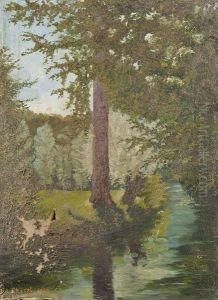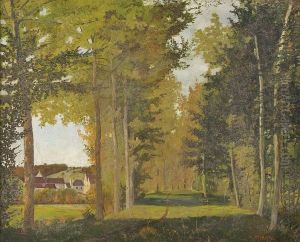Andre Camille Chazal Paintings
André Camille Chazal was a French painter and engraver born in Paris in 1793. His artistic journey began under the guidance of his uncle, Pierre Chazal, who was a miniaturist. Andre Camille Chazal developed an interest in the fine arts early in life and pursued his artistic education with a focus on painting and engraving. Despite his dedication, Chazal did not achieve significant fame or recognition during his lifetime, and as a result, there is a relative scarcity of information about his personal life and artistic career in historical records.
Chazal's oeuvre includes a variety of subjects such as portraits, landscapes, and historical scenes. However, he is perhaps best remembered for his botanical illustrations. His most notable contribution to art and science was his collaboration with the famous French botanist François-André Michaux. Chazal provided the illustrations for the North American sylva, a comprehensive work on the trees of North America, which was published in several volumes from 1819 onwards. Chazal's detailed and precise botanical illustrations were well-received for their scientific accuracy and artistic quality, and they remain a significant part of his artistic legacy.
Unfortunately, Chazal's career was marred by a dramatic turn of events in his personal life. In 1847, he was convicted of attempting to poison his son-in-law, the renowned French poet and playwright Prosper Mérimée, who was best known for writing the novella 'Carmen,' which later became the basis for Bizet's opera. Mérimée was married to Chazal's daughter, and the conviction led to Chazal's imprisonment. The scandal undoubtedly overshadowed his artistic achievements.
André Camille Chazal died in 1854, and while his work was not widely celebrated during his lifetime, some of his illustrations and engravings are still appreciated by art historians and botanists today. His contributions to botanical illustrations continue to be valued for their historical significance and their role in documenting the flora of North America in the early 19th century.

